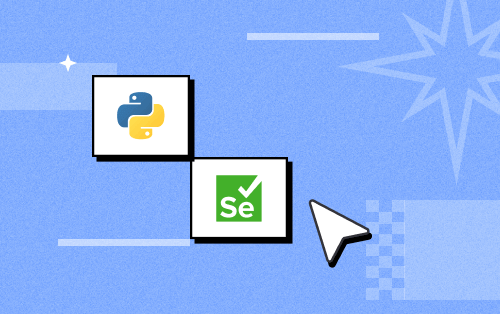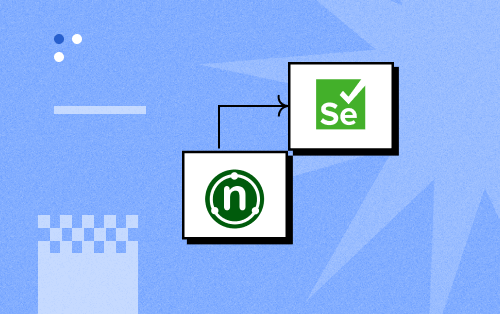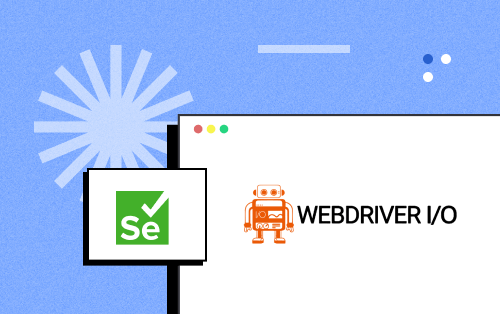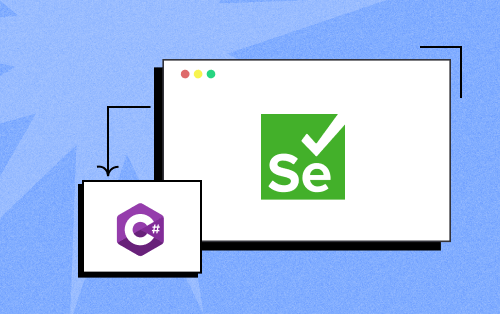- Testing Basics
- Home
- /
- Learning Hub
- /
- Top 50 Jest Interview Questions
- -
- April 24 2023
Top 50 Jest Interview Questions and Answers
Prepare to ace your Jest interviews with our thorough set of interview questions and solutions that will enable you to prove your command of the Jest testing framework.
- General Interview Questions
- CI/CD Tools Interview Questions
- Testing Types Interview Questions
- Testing Framework Interview Questions
OVERVIEW
According to the State of JS survey, Jest has become the most widely used testing framework for JavaScript testing, surpassing other frameworks with a significant rise from 8% in 2016 to 73% in 2021. Jest was initially created to provide unit testing for React components, but its popularity and ease of use have led to widespread adoption by large organisations like Facebook, Airbnb, and Spotify. Additionally, Jest boasts impressive performance metrics, with test suites running up to 30% faster than other testing frameworks, making it a go-to choice for large codebases with thousands of tests.
Jest is a prominent JavaScript testing framework developed by Meta (Facebook). It has been used on over 3,898,000 public GitHub repositories because it works with Babel, TypeScript, Node, React, Angular, and Vue-based applications.
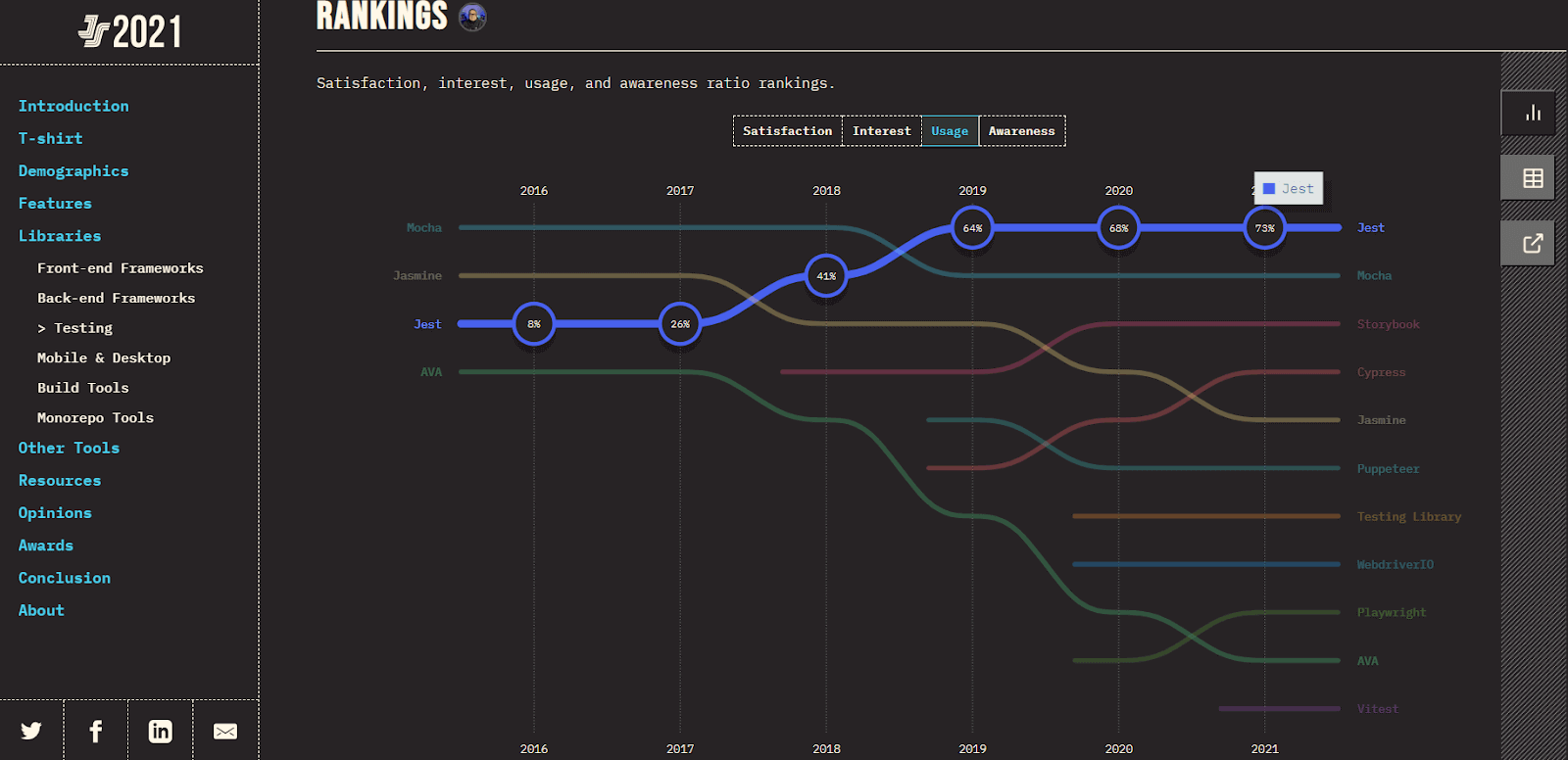
Our comprehensive Jest interview question guide offers over 50 questions, covering a wide range of topics from basic syntax to advanced testing techniques. Whether you're a seasoned developer or just starting out, our content is designed to equip you with the knowledge and skills needed to excel in your next Jest interview. From setting up code coverage to handling external API calls, our guide covers all the essential topics to help you prepare for any question that comes your way. So let's dive into the world of Jest testing and get you ready to ace your next interview!
Jest Interview Questions Sheet
Note : We have compiled all Sheet for you. Feel free to comment on it. Check it out now!!
Beginner Interview Questions of Jest
1. What is Jest?
Jest is a powerful tool for testing JavaScript applications, particularly React and React Native projects. With Jest, developers can perform unit tests, snapshot tests, and coverage reporting to ensure that their code is functioning correctly. Unit tests check individual units or pieces of code for bugs, while snapshot tests compare expected output to actual output to detect unexpected changes. Coverage reporting shows developers how much of their code is covered by tests, helping them to identify areas that need further testing.
2. Why do we need Jest?
Jest is required to automate the testing process and ensure that our application functions as planned. It assists us in writing test cases for our application and ensuring that the code is valid and runs as planned.
3. What is a test suite in Jest?
In Jest, a test suite is a collection of test cases that are related to a specific unit or feature of an application. A test suite is created using the describe function in Jest, which takes two arguments: a string that describes the test suite, and a callback function that contains the individual test cases.
For example, if you were testing a function called sum that adds two numbers together, you could create a test suite using the describe function like this:
describe('sum function', () => {
// individual test cases go here
});
Inside the callback function, you can write as many test cases as you need using the test function, which takes two arguments: a string that describes the test case, and a callback function that contains the test code. Here's an example of a test case that checks whether sum(2, 2) returns 4:
describe('sum function', () => {
test('adds 2 + 2 to equal 4', () => {
expect(sum(2, 2)).toBe(4);
});
});
When you run this test suite, Jest will run all the test cases inside it and report any failures or errors. Test suites are a useful way to organise your tests and keep them focused on specific parts of your codebase.
4. What is a test case in Jest?
In Jest, a test case is a piece of code that defines a specific behaviour or scenario to be tested. It typically consists of one or more assertions that verify that the actual output of a function or module matches the expected output. Test cases are defined using the test function and can include a descriptive name and a series of assertions using Jest's built-in matchers. Jest provides a range of APIs and matchers for writing more complex test cases, including asynchronous tests, tests that simulate user interactions, and tests that check for errors and exceptions. Writing test cases is an essential part of ensuring the quality and reliability of JavaScript code.
5. How do you install Jest?
Installing Jest is a simple process that requires just a few steps:
- First, ensure that you have Node.js installed on your system.
- Once you have Node.js installed, open your terminal or command prompt and navigate to your project directory.
- Use the following command to install Jest using npm:
npm install --save-dev JestThis command install Jest as a development dependency and saves it to your package.json file.
npm testThis command runs all of your Jest tests in the project. Following these steps will enable you to use Jest for testing your JavaScript code.
Note : If you're interested in learning more about Jest testing Here are good resources available to help you get started.
6. What is a snapshot test in Jest?
In Jest, a snapshot test is a type of test that compares the output of a component or function against a pre-existing snapshot. A snapshot is a serialised representation of the expected output. Snapshot tests are useful in ensuring that the output remains consistent across code changes. Jest provides a toMatchSnapshot matcher for creating snapshot tests. If the output matches the snapshot, the test passes. If the output differs, the snapshot needs to be updated to reflect the new output.
7. What is code coverage in Jest?
Code coverage in Jest measures the percentage of your code that is executed during your tests. It helps identify areas of your codebase that may require additional testing or optimization. Jest provides a built-in coverage tool that generates reports on the coverage percentage for each file and the entire project. Use the --coverage flag to generate a coverage report in the coverage directory. You can also set coverage thresholds in your Jest configuration file (Jest.config.js). If the coverage falls below the configured thresholds, Jest will fail the tests and provide a summary of the areas that need more testing.
8. How do you run a single test case in Jest?
To run a single test case in Jest, use the --testNamePattern option followed by the name of the test case you want to run. For example, if you have a test called "testA" in your file, you can run it like this:
npm test -- --testNamePattern=testAThis will run only the "testA" test case and skip all other tests in the file. You can also use a regular expression to match multiple test names, like so:
npm test -- --testNamePattern=/testA|testB/This will run all test cases that have either "testA" or "testB" in their name. Note that --testNamePattern is case-sensitive, so make sure to use the exact test name when running the command.
9. What is the difference between describe and it in Jest?
| describe | it |
|---|---|
| Used to group related test cases together | Used to define an individual test case |
| Can contain multiple it blocks | Can only contain a single test assertion |
| Can be nested to create a hierarchy of test suites | Cannot be nested |
| Can have hooks (beforeAll, afterAll, beforeEach, afterEach) | Cannot have hooks |
| Typically used to group tests by functionality or component | Typically used to test a single behaviour or condition |
describe is used to group related test cases together and can contain multiple blocks, while it is used to define an individual test case with a single assertion. describe can also be nested to create a hierarchy of test suites, and can have hooks (beforeAll, afterAll, beforeEach, afterEach) for setup and teardown. it, on the other hand, cannot be nested or have hooks, and is typically used to test a single behaviour or condition.
10. What is a setup function in Jest?
A setup function in Jest is a special type of function that is executed before or after a set of tests, allowing you to set up the testing environment, configure test fixtures, or perform other necessary setup tasks.
Jest provides a number of different setup functions that you can use depending on your needs, including:
- beforeAll: This function is executed once before any of the tests in a test suite. It's commonly used to set up the testing environment or initialise test fixtures that are needed by all of the tests in the suite.
- beforeEach:This function is executed before each test in a test suite. It's commonly used to set up test fixtures or reset the testing environment before each individual test.
- afterEach: This function is executed after each test in a test suite. It's commonly used to clean up any resources that were used during the test, or to reset the testing environment before the next test.
- afterAll:This function is executed once after all of the tests in a test suite have completed. It's commonly used to clean up any resources that were used during the testing process or to perform other finalisation tasks.
Setup functions are defined using the beforeAll, beforeEach, afterEach, and afterAll methods provided by Jest's global describe function. For example, here's how you could define a beforeEach function that sets up a mock database connection for your tests:
describe('My tests', () => {
let db;
beforeEach(() => {
db = Jest.fn(); // create a mock database connection
});
test('Test 1', () => {
// your test code
});
test('Test 2', () => {
// your test code
});
});
In this example, the beforeEach function creates a new mock database connection before each test in the test suite, ensuring that the database is properly set up for each individual test.
11. What is a teardown function in Jest?
In Jest, a teardown function is a function that is executed after running one or more test cases. It is used to clean up any resources or state that was created during the test, such as closing database connections or cleaning up temporary files. Jest provides several teardown functions, such as afterAll and afterEach, which allow you to define actions to be taken at different points in the test lifecycle. For example, you might use an afterEach function to clear any data that was created during the test or to reset the state of your application. The purpose of a teardown function is to ensure that each test case is run in a clean and isolated environment, without any interference from previous test cases.
12. How do you test React components with Jest?
Testing React components with Jest is an important part of developing reliable and high-quality applications. Jest provides a range of features and tools that make it easy to write comprehensive tests for React components. To get started, you'll need to install Jest, as well as any additional dependencies required for testing React components. This might include react, react-dom, and @testing-library/react, among others.
Once you've installed your dependencies, you can create test files for your components. These files should import the component you want to test, along with any other necessary dependencies. From there, you can write one or more test cases for your component, using Jest's testing functions to render the component, interact with it, and make assertions about its behaviour.
Jest provides a range of utilities and techniques for testing React components, including:
- Rendering components:Jest provides a render function from @testing-library/react that you can use to render your components and get access to their rendered output.
- Interacting with components: You can simulate user interactions with your components using Jest's fireEvent function from @testing-library/react. This allows you to test user interactions and events, such as clicking buttons, typing into inputs, and more.
- Asserting behaviour:Jest provides a wide range of built-in assertions that you can use to check your component's behaviour. You can use these assertions to check for specific text or elements in your component's output, to ensure that the component behaves correctly under different props or state, and more.
- Snapshot testing:Jest's snapshot testing feature allows you to create a snapshot of your component's rendered output and compare it against future runs of the test. This makes it easy to detect unexpected changes in your component's behaviour or output.
Overall, testing React components with Jest is an important part of building robust and reliable applications. By using Jest's features and techniques, you can ensure that your components behave correctly under a variety of conditions, improving the overall quality and reliability of your application.
13. What is a test runner in Jest?
In Jest, a test runner is a tool that is responsible for executing test suites and reporting the results. Jest includes a built-in test runner that can run test suites in parallel, allowing for faster and more efficient testing. The test runner is also responsible for collecting and reporting test results, including detailed information about any failures or errors that occur during the tests. It can generate reports in a variety of formats, such as JSON or HTML, and can be customised using configuration options. The test runner is an important part of Jest's testing infrastructure, and it helps developers to quickly and easily execute and analyse test results, ensuring the quality and correctness of their code.
14. What is the difference between beforeEach and beforeAll in Jest?
beforeEach is executed before each test case and is useful for setting up any necessary state that should be reset before each test case. On the other hand, beforeAll is executed once before all the test cases and is useful for setting up any global state that should be shared across all the test cases. The main difference between the two is that beforeEach is run multiple times, once before each test case, while beforeAll is run only once, before all the test cases.
| null | Runs Before | Runs After |
|---|---|---|
| beforeEach | Each Test | Each Test |
| beforeAll | All Tests | All Tests |
15. What is the difference between afterEach and afterAll in Jest?
AfterEach is executed after each test case and is useful for cleaning up any state that was set up by the beforeEach function. On the other hand, afterAll is executed once after all the test cases have been run and is useful for cleaning up any global state that was set up by the beforeAll function. The main difference between the two is that afterEach is run multiple times, once after each test case, while afterAll is run only once, after all the test cases have been executed.
| Runs Before | Runs After | |
|---|---|---|
| afterEach | Each Test | Each Test |
| afterAll | All Tests | All Tests |
16. How do you test Redux actions and reducers in Jest?
Testing Redux actions and reducers in Jest involves a multi-step process:
- First, create a new test file with a descriptive name that ends in .test.js or .spec.js.
- Import the action creators and the reducer that you want to test into your test file.
- Write one or more test cases that simulate different scenarios that your action creators and reducers might encounter.
- For testing action creators, call the action creator function and then assert that the resulting action object matches the expected shape.
- For testing reducers, create a test case that simulates a particular action being dispatched to the reducer, and then assert that the reducer returns the expected new state.
- Use Jest's built-in expect function and matchers to make assertions about the output of your tests.
Here's an example of how to test a Redux action creator and reducer using Jest:
import { incrementCount, countReducer } from './count';
describe('count actions and reducer', () => {
describe('incrementCount', () => {
it('should create an action to increment the count', () => {
const expectedAction = { type: 'INCREMENT_COUNT' };
expect(incrementCount()).toEqual(expectedAction);
});
});
describe('countReducer', () => {
it('should handle INCREMENT_COUNT', () => {
expect(countReducer(0, { type: 'INCREMENT_COUNT' })).toEqual(1);
});
it('should return the initial state if no matching action is passed', () => {
expect(countReducer(undefined, {})).toEqual(0);
});
});
});
In this example, we're testing an action creator called incrementCount and a reducer called countReducer. We've written two test cases for the reducer, one to test the case where the INCREMENT_COUNT action is dispatched, and one to test the default case where no matching action is dispatched. We've also written a test case for the action creator to ensure that it returns the expected action object.
17. What is a mock module in Jest?
In Jest, you can test Redux actions and reducers by creating test cases that simulate different scenarios and verifying the expected outcomes. To test actions, you can create mock action creators that dispatch a specific action, and then check if the expected action was dispatched. For reducers, you can create test cases that simulate specific action types and payload data, and then check if the reducer returns the expected state. You can also use the Redux store to test the integration between actions and reducers. Jest provides useful tools such as expect and redux-mock-store to help write these tests. By testing actions and reducers, you can ensure that your Redux store behaves as expected and maintains the expected application state.
Intermediate Interview Questions of Jest
18. Can you describe the various frameworks and tools that Jest uses to implement unit testing in React applications?
Jest is a popular testing framework for JavaScript applications, including React applications. It is a comprehensive testing tool that includes features such as mocking, code coverage, and snapshot testing. Some of the frameworks and tools that Jest uses to implement unit testing in React applications include:
- JSDOM:Jest uses JSDOM, a JavaScript implementation of the DOM, to provide a simulated environment for testing React components in the browser.
- Babel:Jest can be configured to use Babel, a JavaScript transpiler, to transform modern JavaScript syntax into browser-compatible code.
- Enzyme:Jest can be used in conjunction with Enzyme, a testing utility library for React, to provide additional testing capabilities such as shallow rendering and full DOM rendering.
- React Test Renderer:Jest also includes React Test Renderer, a lightweight library for rendering React components to a virtual DOM, which can be used for snapshot testing.
By using these frameworks and tools, Jest provides a powerful and comprehensive testing environment for React applications.
19. How can you generate snapshot tests using Jest?
Jest provides a feature called "snapshot testing" that allows you to capture a snapshot of the output of a component or function and compare it to a previously saved snapshot. To generate snapshot tests using Jest, you can follow these steps:
- Write the component or function you want to test.
- Use Jest's toMatchSnapshot() function to generate a snapshot of the output.
- Run the test, and Jest will compare the generated snapshot to a previously saved snapshot.
- If the snapshot matches the saved snapshot, the test passes. If not, the test fails and you can review the changes to see if they are expected or not.
Here's an example of how to use snapshot testing with Jest:
// component.test.js
import React from 'react';
import render from 'react-test-renderer';
import MyComponent from './MyComponent';
describe('MyComponent', () => {
test('renders correctly', () => {
const tree = renderer.create(<MyComponent />).toJSON();
expect(tree).toMatchSnapshot();
});
});
In this example, we're using the renderer from the react-test-renderer package to render a React component called MyComponent. We then use Jest's toMatchSnapshot() function to generate a snapshot of the component's output. The first time the test is run, Jest will save the snapshot to a file in the __snapshots__ directory. On subsequent test runs, Jest will compare the generated snapshot to the saved snapshot, and the test will fail if there are any differences.
Snapshot testing can be a powerful tool for catching regressions and ensuring that your UI components and functions behave consistently over time. However, it's important to keep in mind that snapshots are not a substitute for unit tests, and should be used in combination with other types of tests to ensure comprehensive test coverage.
Also Read: A list of 70 Cucumber Interview Questions and Answers
20. Is it possible to run a single or several test files using Jest? If so, how?
Yes, it is possible to run a single or several test files using Jest. To run a single test file, you can use the following command:
Jest <filename>Where "filename" is the name of the test file you want to run. Jest will only run the tests in that file.
To run several test files, you can specify a pattern that matches the files you want to run using the following command:
Jest <pattern>Where pattern is a pattern that matches the names of the test files you want to run. For example, to run all test files in the src directory, you can use the following command:
Jest src/**/*.test.jsThis will run all test files in the src directory and its subdirectories that end in .test.js.
By running single or several test files, you can save time during development and only run the tests that are relevant to the changes you have made.
21. What are some common commands that can be used with Jest?
Jest is a powerful testing tool that offers a variety of commands to help you write and run tests efficiently. Here are some common commands that can be used with Jest:
- Jest:Run all the tests in your project.
- Jest filename:Runs the tests in a specific file.
- Jest --watch:Watches for changes to your code and runs the tests automatically.
- Jest --coverage:Generates a code coverage report for your tests.
- Jest --updateSnapshot: Updates the snapshots generated by your snapshot tests.
- Jest --verbose:Prints detailed information about the test results.
- Jest --runInBand:Runs the tests serially instead of in parallel.
- Jest --detectOpenHandles:Detects and logs any unclosed handles after the tests have completed.
These commands can be customised further with a variety of flags and options, allowing you to fine-tune your test environment to meet your specific needs.
22. How does Jest handle asynchronous function calls?
Jest offers multiple ways to handle asynchronous function calls in tests. One way is to use the async/await syntax, which allows you to write asynchronous tests in a synchronous style. You can mark a test function as async, and then use the await keyword to pause the test until an asynchronous operation is complete. Jest will automatically wait for the promise to resolve before continuing to the next test. Another option is to use Jest's built-in done callback, which is called once the asynchronous operation is complete.
You can pass the done callback as an argument to the test function, and then call it when the asynchronous operation is finished. Jest will wait for the done callback to be called before moving on to the next test.
Jest also provides the Promise.resolve() and Promise.reject() methods to handle asynchronous operations. These methods can be used to create a promise that resolves or rejects with a specific value, and then awaited or passed to then() or catch() methods.
23. How does Jest handle mistakes that occur during test execution?
Jest provides a range of features to help identify and diagnose mistakes that occur during test execution.
If a test fails, Jest provides a detailed report of the error, including the file name and line number where the error occurred, the name of the test, and a stack trace. This information helps developers quickly identify the source of the error and fix it.
Jest also provides a feature called "watch mode," which automatically re-runs tests whenever changes are made to the codebase. This can be especially helpful in catching errors early on and preventing them from being propagated throughout the codebase. Additionally, Jest supports debugging test cases using standard debugging tools like Chrome DevTools, allowing developers to step through test cases and identify issues more easily.
24. What is an assertion library? Why would you utilise one while writing automated tests?
An assertion library is a tool that provides a set of functions to help developers verify that their code behaves as expected. These functions typically include methods to check whether a value is equal to a specific expected value, whether it's a certain type, or whether it meets certain criteria.
While writing automated tests, assertion libraries can help developers verify that their code is functioning as expected, catch bugs early on in the development process, and improve the overall quality and reliability of their codebase. Assertion libraries also provide more descriptive error messages when a test fails, making it easier to identify and fix issues quickly.
Some popular assertion libraries for JavaScript include Jest, Chai, and assert.js. By leveraging the features provided by an assertion library, developers can write more comprehensive, effective tests that help ensure their code is robust and bug-free.
25. Can you provide some instances of real-world apps that have utilised Jest for unit testing?
Yes, Jest is a flexible testing framework that can be used to test a wide range of apps, including React and Node.js. Because of its simplicity of use and compliance with React's testing facilities, React developers frequently utilise Jest for unit testing their components. Jest's ability to run tests concurrently makes it an excellent choice for testing Node.js apps with sophisticated logic or API connections.
26. How does Jest work under the hood to achieve its high level of performance?
Jest achieves high performance by using a combination of techniques. It runs tests in parallel to maximise CPU usage, and intelligently determines which tests to run based on changes since the last run. Jest also caches test results, optimising the test execution order and minimising setup and teardown costs. Additionally, Jest's use of a lightweight test runner and efficient assertion library contribute to its performance. Together, these techniques make Jest a fast and reliable tool for testing in the JavaScript ecosystem
27. How can Jest help us enhance our code coverage?
Jest can help enhance our code coverage by providing tools to measure the extent to which our codebase is tested. With Jest, we can generate code coverage reports that show us which parts of our code are not covered by our tests. By identifying these gaps in our test suite, we can more effectively target areas of our code that need more attention and improve the overall quality and reliability of our application. Additionally, Jest provides built-in features such as watch mode and test filtering, which make it easy to iterate on tests and continually improve our code coverage over time.
28. Is there any circumstance in which Jest could not be a suitable fit for us?
While Jest is a powerful and widely-used testing framework, there are certain circumstances where it might not be a suitable fit for a project. Here are a few examples:
- Project size: Jest is a large framework with many features, so it may be overkill for very small projects that do not require advanced testing capabilities.
- Integration with other tools:Jest is primarily designed for use with React and may not integrate as smoothly with other frameworks or tools.
- Compatibility with certain testing types:Jest is optimised for unit testing, and while it can also handle integration and end-to-end testing, it may not be the best choice for projects that require extensive testing in these areas.
- Performance:Jest can be slower than some other testing frameworks, especially when running large test suites or when using features like snapshots.
While Jest is a versatile and powerful testing framework, it may not always be the best choice for every project or circumstance.
29. Do you think we should always strive to have 100% test coverage in our application?
While having 100% test coverage can be a worthy goal, it may not always be practical or necessary. In some cases, it may be more important to prioritise testing in areas of the application that are most critical or prone to errors. Additionally, achieving 100% coverage can be difficult or impossible in certain situations, such as with complex or rapidly changing code. Ultimately, the goal of testing should be to ensure the application is functioning correctly and meeting business requirements, rather than simply achieving a specific coverage percentage.
30. How should a CI pipeline be configured to run tests created using Jest?
A CI (Continuous Integration) pipeline can be configured to run tests created using Jest by incorporating Jest commands into the pipeline's scripts or build process. The pipeline should be configured to install all necessary dependencies before running the Jest command to ensure the test environment is properly set up.
Some popular CI platforms such as Jenkins, CircleCI, and Travis CI have built-in support for running Jest tests and can be configured to automatically trigger tests on every code commit or pull request. Additionally, the pipeline can be configured to generate code coverage reports, which can be integrated with code quality tools like CodeClimate or SonarQube.
It's important to also consider the performance impact of running Jest tests in a CI pipeline, as large test suites can significantly slow down the build process. Configuring parallel test execution or using a distributed testing service can help alleviate these issues.
31. What are some crucial aspects to remember while developing tests with Jest?
When developing tests with Jest, there are several important aspects to keep in mind:
- Test coverage: It is important to ensure that your tests cover all aspects of your codebase. Use Jest's coverage reports to identify areas where your tests could be improved.
- Test organisation:Organise your tests in a logical and modular way using the describe() and it() functions. This makes it easier to maintain and run your tests.
- Use mocks:Use Jest's built-in mocking capabilities to isolate components and dependencies during testing.
- Test data:Use realistic and representative test data to ensure that your tests are accurate and relevant.
- Avoid side effects: Ensure that your tests do not have any side effects on your application or environment.
- Continuous Integration:Use a Continuous Integration (CI) tool to run your tests automatically after every code change to catch issues early in the development cycle.
32. What is the best way to maintain consistency between snapshots generated by Jest?
The best way to maintain consistency between snapshots generated by Jest is to be intentional and deliberate with the changes made to the codebase. When a snapshot test fails, it is crucial to examine the changes that were made to determine if the test needs to be updated or if the code needs to be refactored. When making intentional changes to the codebase, it is essential to update the tests accordingly, including snapshot tests.
It is also important to be aware of any changes in the testing environment, such as updated dependencies or Jest configuration changes, that may affect the snapshot tests. By being intentional and deliberate with changes and consistently updating tests, snapshot tests can be a reliable and effective tool for testing code in Jest.
33. How does Jest simulate dependencies?
Jest uses the concept of "mocks" to simulate dependencies. Mocks are fake versions of modules or functions that can be used to isolate and test specific parts of an application. Jest provides built-in mocking capabilities that can be used to replace a module's default implementation with a mock implementation. This allows developers to simulate various scenarios and test their application's behaviour under different conditions.
Jest also provides a powerful mocking framework that allows developers to create and configure mock objects in a highly flexible manner. By using mocks, developers can test code that depends on external resources (such as databases or APIs) without actually accessing those resources. This can make testing more efficient and less error-prone, as it reduces the risk of unexpected behaviour due to external factors.
34. What purpose do snapshots serve in Jest testing?
Snapshots in Jest testing are used to identify changes in a component's or module's output. They take a picture of the output and compare it to the previously saved snapshot in subsequent tests. If the output has changed, the test fails and the developer is prompted to evaluate and validate the modifications. Snapshots provide efficient and dependable testing of visual components by minimising the need for manual change verification and lowering the danger of introducing regressions into the codebase.
35. What do Jest's beforeEach and afterEach methods do?
Jest's beforeEach and afterEach methods execute a function before or after each test case in a test suite, accordingly. They are used for assembling and disassembling test fixtures, ensuring that each test is performed in a clean and predictable environment. BeforeEach is often used to initialise variables or other resources required by the test, whereas afterEach is typically used to clean up any resources or reset variables to their default state. By decreasing the possibility for test pollution and providing a consistent testing environment, these strategies can enhance the reliability and maintainability of test suites.
36. What kinds of matchers are there in Jest?
Jest provides a range of matchers that allow developers to test values in various ways. Some of the most commonly used matchers in Jest include toBe, toEqual, toMatch, toBeDefined, toBeFalsy, toBeTruthy, toBeNull, toContain, toHaveLength, toHaveProperty, toBeInstanceOf, and toThrow. These matchers can be used to compare values, check for the existence of properties, test regular expressions, and much more. By using these matchers, developers can create more effective and efficient tests that ensure their code is functioning as expected.
37. How do you use Jest to evaluate React components that have state?
To test React components that have state, you can use Jest's render() method from the @testing-library/react package to render the component and then interact with it as a user would. You can then assert the component's output using Jest's various matchers. If you want to test a component's state directly, you can use Jest's setState() method to set the state to a known value and then assert that the component renders as expected based on that state. Additionally, you can use Jest's instance() method to access the component instance and test its state directly.
38.How can Jest be used to test asynchronous code?
Jest offers numerous methods for testing asynchronous programming. To handle promises returned by asynchronous code, one approach is to use async/await syntax in your test code. Another method is to use the done callback to indicate the end of an asynchronous test.
Jest also has matchers for asynchronous code that yields promises, such as resolves and rejections. The resolved matcher ensures that a promise is effectively resolved, whereas the rejected matcher ensures that a promise is rejected with a specified mistake.
To test code that employs timers or delays, you may also use Jest's setTimeout method. You may influence the passage of time in your tests and create assertions about how the code reacts over time by using Jest.useFakeTimers().
39. How does Jest describe command work and what is its purpose?
In Jest, the describe command is used to group together relevant test cases in a test suite. It takes two inputs: a document that describes the collection of tests and a function that contains the individual test cases.
Using describe, you may arrange your tests in a logical and ordered manner, making it easier to understand and maintain your test suite. You may use describe to organise tests, for example, depending on the component or function being tested, or the behaviour or feature being tested.
The description blocks can be nested to form a test group hierarchy. This is handy for organising complicated test suites or testing components or functions that have different levels of operation.
40. What function does the Jest toHaveBeenCalledWith matcher do?
The toHaveBeenCalledWith matcher in Jest is a powerful tool for asserting that a function has been called with specific arguments.To use the toHaveBeenCalledWith matcher, you first need to create a mock function using the Jest.fn() method. This creates a new, empty mock function that you can use to track calls to the function.
Once you have your mock function, you can call it with some arguments, and then use the toHaveBeenCalledWith matcher to assert that the function was called with those specific arguments. This is useful when you want to ensure that a function is being called with the correct arguments, or when you want to test that a function is being called with a specific set of inputs.
Jest provides a variety of other matchers and assertion functions that you can use to test your code, including:
- expect:This is the primary assertion function in Jest, and is used to make assertions about your code.
- toBe:This matcher is used to compare values using strict equality (===).
- toEqual:This matcher is used to compare values using deep equality, and can be used to compare objects and arrays.
- toThrow:This matcher is used to assert that a function throws an error when called.
- not:This modifier can be used to negate a matcher, for example expect(foo).not.toBe(bar).
Overall, the toHaveBeenCalledWith matcher is an important tool for testing functions in Jest, and can help you ensure that your code is behaving correctly under a variety of conditions.
Advance Interview question of Jest
41. How would you go about setting up a Jest test suite for a React application?
Setting up a Jest test suite for a React application is a standard practice in modern web development. Jest is a popular JavaScript testing framework, and it's widely used in the React ecosystem due to its simplicity and ease of use. Here are the steps to set up a Jest test suite for a React application:
- Install Jest as a dev dependency by running the following command in your project directory:
npm install --save-dev jestnpm testJest will automatically discover and run all the test files in your __tests__ folder. It will also provide a detailed report of the test results, including information about the number of tests run, the number of tests passed, and any test failures.
By following these steps, you can set up a Jest test suite for your React application and ensure that your components are working as expected.
42. What strategies do you use to debug Jest tests?
When troubleshooting Jest tests, use the --verbose parameter on the Jest CLI to acquire full information about test runs, including problems. The built-in debugging tools in Jest, such as expect.assertions() and expect.hasAssertions(), can assist in identifying unexpected behaviour in tests. The snapshot testing feature in Jest allows you to compare test output to a known good version, emphasising changes that cause tests to fail. These techniques can aid in the rapid identification and resolution of Jest test difficulties. Using these strategies is critical for assuring the quality and dependability of React apps, making Jest a valuable tool for software engineers.
43. How do you handle asynchronous code in Jest tests?
When creating tests, Jest provides a variety of management options for asynchronous code. The first choice is to make use of the async/await syntax, which lets you write asynchronous code in a synchronous way. Pronouncing the capability as async and utilising the anticipated catchphrase makes it simpler to peruse and fathom the code.
Utilising the.resolves or.rejects matchers, which assist in testing promise resolution or rejection without requiring async/await syntax, is yet another option. Time is saved and code is written less using this method.
Utilising the done callback function, which is passed as an argument to the test function, is a third option. When setup or cleanup are required, calling this function after the asynchronous code has finished enables Jest to wait before finishing the test.
Last but not least, the setTimeout function can be used to hold off on running the test for a predetermined amount of time, which is useful for waiting before doing so.
44. What is the difference between a snapshot test and a unit test in Jest?
| Feature | Snapshot Test | Unit Test |
|---|---|---|
| Purpose | To capture a snapshot of the component's output | To test individual units of code for correctness |
| Test focus | Component output (DOM, UI) | Function or module output (JavaScript) |
| Test type | Integration testing | Unit testing |
| What is tested? | The rendered markup of a component | The internal implementation details of a function |
| Test methodology | Renders the component and compares the output to a saved snapshot | Calls the function with known inputs and compares the output to the expected result |
| Test output | Serialised representation of the component's rendered output | Pass/Fail assertion message with details on what failed |
| Test maintenance | Needs to be updated if component's visual output changes | Needs to be updated if the implementation of the function changes |
| Advantage | Helps catch visual regressions in the component | Tests individual units in isolation, making it easier to pinpoint issues |
Jest offers two types of tests: snapshot tests and unit tests. Snapshot tests verify that the output of a component or function remains consistent over time. The test takes a "snapshot" of the output and compares it to a stored version. If there are any changes to the output, the test fails. Snapshot tests are useful to ensure components or functions are not unintentionally altered in the future.
Unit tests, on the other hand, verify the behaviour of a single unit of code, which can be a function, a class, or a module. These tests ensure the code performs as expected and that any modifications made to the code do not break the anticipated behaviour. Unit tests cover all potential scenarios and edge cases.
45. How do you mock a function in Jest?
Mocking functions in Jest involve creating a new, empty mock function using the Jest.fn() method and customising it to match the behaviour of the original function. This can be useful for a number of reasons, such as testing functions that depend on external APIs or services, or simulating specific behaviour for testing purposes.
To create a mock function in Jest, you can use the Jest.fn() method, like this:
const myFunction = Jest.fn();This creates a new mock function called myFunction. You can then customise this function by chaining methods such as mockReturnValue, mockResolvedValue, or mockImplementation.
For example, let's say you want to mock a simple function that adds two numbers together:
Chafunction add(a, b) {
return a + b;
}
ngeTo mock this function in Jest and make it always return 10, you could do something like this:
const add = Jest.fn().mockReturnValue(10);Now, whenever the add function is called in your test, it will return 10 instead of the actual result of adding two numbers.
It's worth noting that you can also use the Jest.spyOn() method to mock an existing function on an object, rather than creating a new mock function. This can be useful for testing methods on objects that depend on other methods within the same object.
46. What is the purpose of the Jest CLI?
The Jest CLI (Command Line Interface) is a command-line tool that allows developers to execute Jest tests and other test-related operations. Its goal is to provide a straightforward and user-friendly interface for handling Jest tests without the requirement for a separate build tool or IDE. Developers may simply run tests, analyse test results, and produce coverage reports using the Jest CLI. Furthermore, the Jest CLI gives various configuration options for customising the testing environment, such as defining the location of the test file or enabling watch mode to automatically re-run tests when code changes are detected. Overall, the Jest CLI is an effective tool for managing and executing Jest tests, offering developers a more simplified testing experience.
47. How do you configure Jest to run tests in parallel?
Jest is a popular JavaScript testing framework that offers a number of useful features, including the ability to run tests in parallel. Running tests in parallel can greatly speed up test execution times, especially for large test suites.
By default, Jest runs tests in parallel using a maximum of the number of logical processors available on the machine. However, you can also explicitly specify the maximum number of workers to use using the --maxWorkers option. For example, if you want to run tests using 4 workers, you can use the following command:
Jest --maxWorkers=4When Jest runs tests in parallel, it automatically divides your test suites into multiple groups and distributes them among the specified number of workers. This means that each worker runs a subset of the total test suites, which can significantly reduce the overall test execution time.
It's important to note that running tests in parallel can also have some downsides, such as increased memory usage and the potential for tests to interfere with each other. Therefore, it's important to carefully consider the tradeoffs before configuring Jest to run tests in parallel.
Overall, Jest's ability to run tests in parallel can be a powerful tool for improving the efficiency of your test suite, and the --maxWorkers option provides a simple and flexible way to configure parallel testing.
48. What is the difference between Jest and Enzyme?
Jest and Enzyme are both popular testing frameworks used in the JavaScript ecosystem, but they serve different purposes and have different approaches to testing. Jest is a full-featured testing framework that includes everything needed for testing JavaScript applications, including test runners, assertions, and mocking capabilities. Jest is known for its ease of use and integration with popular JavaScript frameworks like React, Angular, and Vue. Jest is particularly well-suited for testing the functionality of the application as a whole and for testing complex scenarios involving multiple components and interactions.
Enzyme, on the other hand, is a testing utility specifically designed for testing React components. Enzyme provides a set of functions for shallow rendering, mounting, and manipulating React components, making it easy to simulate user interactions and test component behaviour. Enzyme is particularly well-suited for testing individual React components and for testing component interactions and state changes.
Overall, Jest and Enzyme serve different purposes and have different strengths. While Jest is a more comprehensive testing framework that can be used for testing a wide variety of JavaScript applications, Enzyme is a more specialised testing utility designed specifically for testing React components. Depending on the requirements of your testing environment, you may choose to use one or both of these frameworks to achieve your testing goals.
49. How do you set up code coverage in Jest?
Jest is a popular testing framework for JavaScript that comes with built-in code coverage capabilities. Setting up code coverage in Jest is a straightforward process, and involves the following steps:
- Ensure that you have the latest version of Jest installed in your project. You can install it using npm or yarn:
npm install --save-dev JestOr
yarn add --dev JestIn your Jest configuration file (usually Jest.config.js), add the coverage property and set it to an object with the following properties:
module.exports = {
// ...
coverage: {
collectCoverage: true,
collectCoverageFrom: ['src/**/*.{js,jsx}'],
coverageReporters: ['lcov', 'text-summary'],
},
};
Jest --coveragemodule.exports = {
// ...
coverageThreshold: {
global: {
branches: 80,
functions: 80,
lines: 80,
statements: 80,
},
},
};
By following these steps, you should now have code coverage set up in Jest for your JavaScript project.
50. How do you handle mocking of external API calls in Jest tests?
When testing code that makes external API calls, it's important to mock those API calls to ensure that your tests are deterministic and don't rely on external dependencies. Jest provides several ways to handle mocking of external API calls. Here's a step-by-step guide:
- Identify the external API calls made by your code that need to be mocked.
- Create a mock implementation of the external API that returns fake data. You can do this using Jest's Jest.fn() method to create a mock function that returns the fake data:
// Example mock implementation of an external API
const mockGetData = Jest.fn(() => {
return {
data: {
id: 1,
name: 'John Doe',
email: 'johndoe@example.com',
},
};
});
Use Jest's Jest.mock() method to replace the original implementation of the external API with the mock implementation:
// Example mock implementation of an external API
Jest.mock('./api', () => ({
getData: mockGetData,
}));
/ Example test case for code that makes an external API call
test('should return the correct user data', async () => {
const result = await getUserData();
expect(result).toEqual({
id: 1,
name: 'John Doe',
email: 'johndoe@example.com',
});
});
In this example, the getUserData() function is being tested, which makes an external API call to the getData() function. The test is checking that the function correctly returns the expected data based on the fake data returned by the mock implementation. By following these steps, you should be able to mock external API calls in your Jest tests and ensure that your tests are deterministic and reliable.
Tips for Jest Interview questions
As you prepare for a Jest interview, it's important to have a solid understanding of Jest framework principles and practices, and to be able to demonstrate your practical application of the framework. To impress your interviewer, consider using the following Jest interview tips to showcase your experience, problem-solving abilities, and skills. By following these tips, you'll be better equipped to ace your Jest interview, stand out from other candidates, and secure the job.
- Understand the differences between Jest and other testing frameworks: Jest is a popular JavaScript testing framework, but it's important to understand how it differs from other testing frameworks like Mocha, Jasmine, and Enzyme.
- Be familiar with the Jest API:Jest provides a range of APIs for testing JavaScript code, such as expect(), describe(), it(), and more. Make sure you understand how to use these APIs effectively.
- Practice writing snapshot tests:Jest provides a powerful snapshot testing feature that allows you to easily compare the output of your code against a previously saved snapshot. Practice writing snapshot tests to demonstrate your proficiency with this feature.
- Understand mocking and stubbing: Jest provides robust mocking and stubbing capabilities that allow you to isolate code and test it in isolation. Make sure you understand these concepts and can apply them effectively in your tests.
- Be prepared to talk about asynchronous testing:Asynchronous testing is a common scenario in JavaScript code, and Jest provides several mechanisms for testing asynchronous code, such as the done() callback and async/await. Be prepared to discuss how you would test asynchronous code using Jest.
- Demonstrate your problem-solving skills:As with any technical interview, it's important to demonstrate your problem-solving skills. Be prepared to work through coding challenges related to Jest and to explain your thought process as you work through the problem.
- Practise good testing practices:Finally, be prepared to discuss your testing philosophy and how you approach testing in general. Employers are often looking for candidates who understand the importance of testing and can demonstrate their ability to write effective tests. Make sure you can articulate your approach and demonstrate how you apply good testing practices in your work.
Jest Interview Questions Sheet
Note : We have compiled all Sheet for you. Feel free to comment on it. Check it out now!!
Conclusion
Jest is an important ability for developers to exhibit in job interviews since it is a commonly used testing framework in the JavaScript ecosystem. To do well in your Jest interview, you must first comprehend the framework's concepts, tools, and best practices. This involves understanding test runners, matchers, and mocks, as well as other common testing frameworks like Mocha and Jasmine. It's also a good idea to practise building tests for various scenarios and use cases to get a feel for Jest's syntax and structure. You should expect questions on asynchronous testing, snapshot testing, and your approach to addressing complicated challenges throughout the interview. Make sure you can define your testing philosophy and show that you can design successful tests. By following these guidelines, you will be well-prepared to succeed in your Jest interview and exhibit your industry experience.
Frequently asked questions
- General
Did you find this page helpful?
More Hubs
Try LambdaTest Now !!
Get 100 minutes of automation test minutes FREE!!







